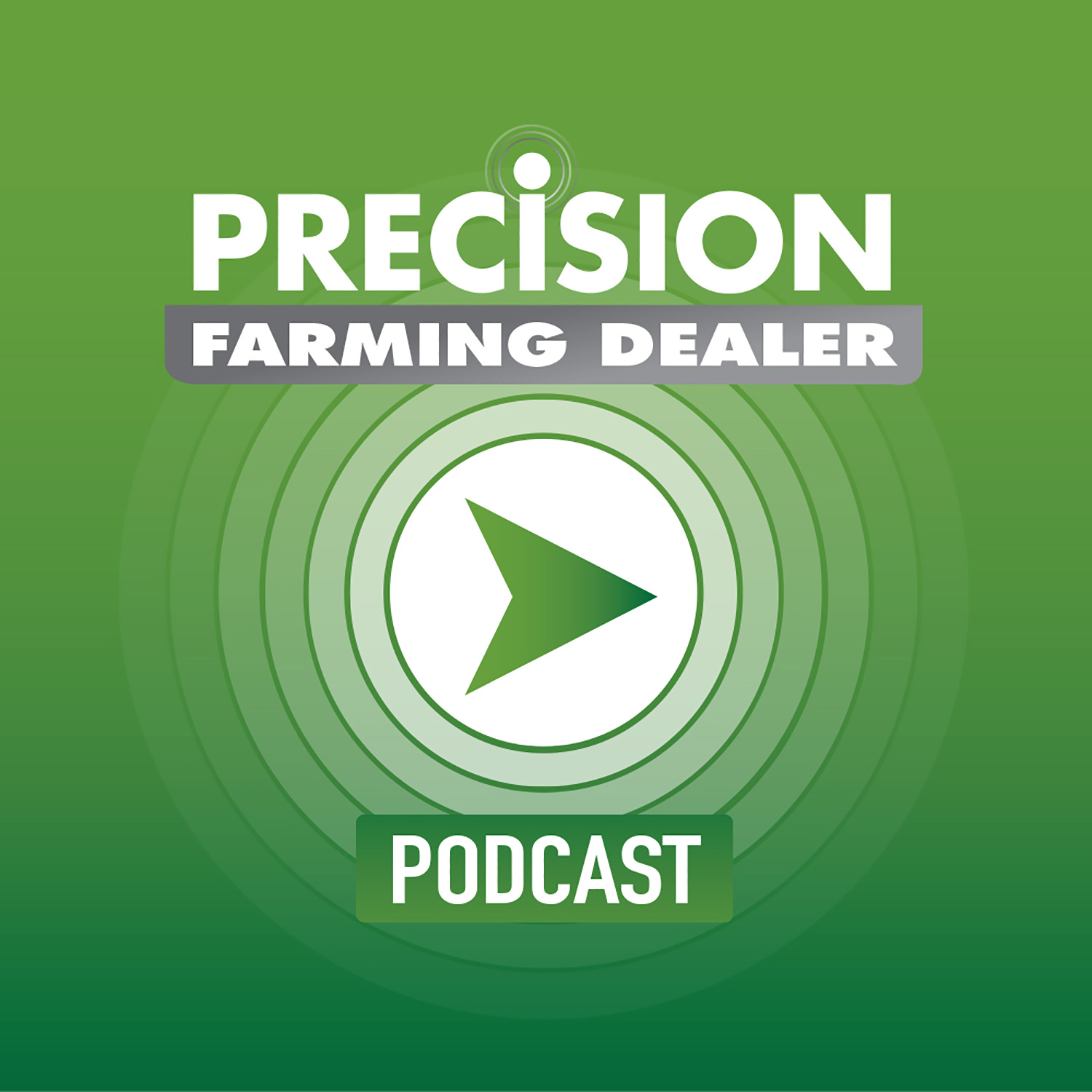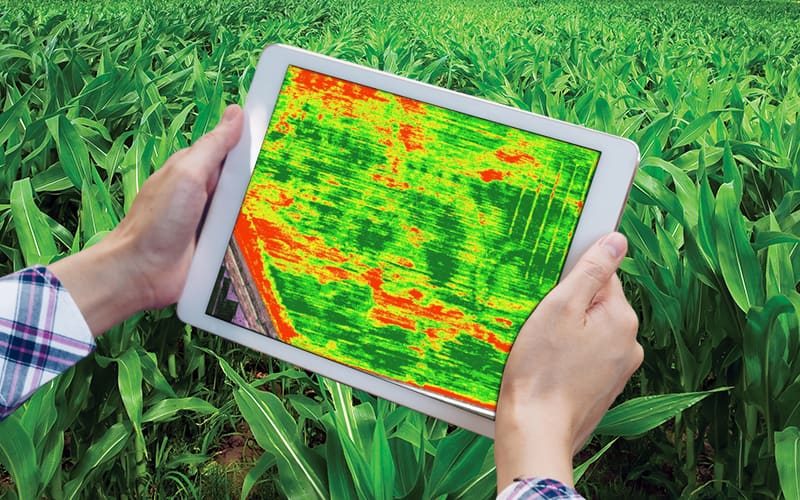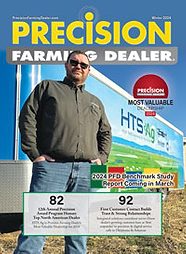Succeeding in the digital ag space requires precision farming dealers to have an understanding of the benefits of the technology without forgetting the core reason for doing business in the first place.
“What’s become clear over time is in the fog of tools and technology, it’s easy to lose sight of purpose,” says Devin Dubois, vice president of Integrated Solutions for Western Sales Ltd., a 6-location John Deere dealership in Saskatchewan. “The core purpose for people … is selling and servicing equipment.”
Drawing perspective from meetings with dealers throughout North America, Dubois outlined the benefits and challenges of doing business in the digital ag space during a presentation at the recent Western Equipment Dealers Assn. International Dealer Conference.
Dubois is also the co-founder and CEO of FieldAlytics Solutions Canada Inc., which specializes in digital management of ag production. He urges dealers to focus on 4 core areas to be proficient and profitable in the digital ag environment.

Online Exclusive
Hear more from Devin Dubois in Precision Farming Dealer’s podcast series where he details Western Sales’ development, execution and analysis of its agronomic services platform, utilizing an in-house agronomist.
Go to PrecisionFarmingDealer.com/Dubois to listen now!
1. Determine Goals
Dubois starts by defining the term “precision agriculture.” Farmers aren’t trying to be imprecise, after all. “It's about is employing the latest tools available in order for producers to put the right product at the right amount at the right time and the right place,” he says.
Technological advances, including equipment automation and data connectivity, are becoming increasingly important in helping growers get the right answers. Weather stations, sensors and tools that allow for the retrofitting of planters with different clutch technology are just some of the examples.
But Dubois has found in talking to dealers, that selling in the digital space may not be immediately profitable, even when adding in sales in parts and service.
“We continue to find that dealers struggle with crossing the line to selling things in the digital ag space and making a lot of bottom-line dollars on it,” Dubois says. Maybe, though, he says the goal of getting into the digital ag space “is not to actually make bottom-line dollars on selling that stuff. Maybe your reason is improving your customers’ production.”
Increased production can lead to more satisfaction, which can make for a happy, loyal customer. “We want to do things because we think it helps our customers, and helping our customers is good for our core business,” Dubois said. “So that may be a reason that you start investing more in this space, getting more involved.”
The goal is to take that philosophy a step further in order to start understanding the customer’s production, analyzing production information in order to create a sales strategy, he says. Dubois offers an example of the distinction from a typical traditional sales pitch that focuses on the features and benefits of a certain type of seeder.
“It’s easy to say, ‘You should buy this seeder from us because it's excellent quality, it's competitively priced, we're an excellent dealer and we offer great service. We'll get you a quote,’’ he says. It’s simple and to the point, but that kind of pitch may not be as effective in a more digitized environment.
Here’s the alternative customer pitch Dubois suggests. “I see it took you more than 30 days to seed this season, that's about 10 days longer than average. We can help you shrink that window by 12 days if we did a bit of an upgrade, keep your costs pretty close to the same and reduce overlap and improve seed placement. I'll show you some data.”

“You have to be more useful than the phone in your customer’s pocket. If you're stuck on the features and benefits of quality training, I think this is a path to a slow death…” — Devin Dubois
Similarly, a dealership might want to set itself apart as a go-to source of information and services. “The widgets we sell are important, but we're moving into an age where the expertise to operate the equipment and make it a perform properly, is equally important if not more so,” Dubois says.
He offers a story in which a producer was talking to an agronomist about combine optimization. The producer didn’t know about a certain function and asked the agronomist to explain it.
“So he hops in the tractor cab, hits the automated setting functionality on the screen and it just blew the producer’s mind,” Dubois says. “It just wasn't intuitive. The customer had been using this equipment for a few seasons already and wasn't aware that this capability even existed.”
Dealers and agronomists working in tandem should be able to solve hardware and software-related questions, but Dubois adds, it can get complicated. “You might do just as well to have a computer scientist on staff, frankly. It sounds silly, but we're getting to that space.”
2. Measuring Success
The goals are set. Now it’s time to measure success, which Dubois says can be a little tricky. “Depending on how you do your accounting, if you're not bringing in big bottom-line dollars from the services and widgets themselves, then how are we defining our success and how are we going to measure it?”
Keeping customers happy is always important. A dealer’s expertise in the digital ag space generates sales and service for other types of equipment.
But dealers struggle with making a concrete connection “because some of it doesn't translate very well to our standard models of measuring labor and its value,” Dubois says.
This will change as more dealers delve into automation and connectivity. Measures of success could be unique for each dealer, too. “But we’ve got to come up with ways to actually measure this more effectively to understand if what we're doing actually has the value we want it to have in the dealership,” Dubois says.
3. Identify Partnerships
Nearly every business, from accountants to lenders to suppliers, has a presence in the digital ag space. But not every source, Dubois says, will have the kind of expertise that dealers have in the equipment and technology.
Establishing partnerships with agronomists, insurers and other businesses in order to become a valuable source of information can leverage that knowledge.
“We don’t need to go into this space thinking that we will own the whole customer,” Dubois says. “There are a lot of agronomists who do it better than a dealer can and they have loyal relationships with their customers. But there are a lot of agronomists out there who still don't understand the digital ag space and equipment and maybe are even a little scared of it.”
An effective strategy is to find those agronomists in the region who need help and, as a precision expert, offer assistance. Make their lives easier, Dubois says, and those contacts will turn to you when their own customers need referrals for selling and servicing equipment.
“You have tools, and all the dealerships now have access to certain tools that they can use to help other people make their producers better,” Dubois says.
4. Be Better than Google
Start small when introducing a new widget or service instead of going “full scale,” Dubois says. Focus on working closely with customers who seem to be interested in the help.
Do little things that can help cultivate relationships, like becoming a trusted resource for information that growers can’t get just by getting on the Internet. Dubois calls it being “better than Google.”
“You have to be more useful than the phone in your customer’s pocket,” Dubois says. “And if you're stuck on the features and benefits of quality training, I think this is a path to a slow death. You need to go to the grower with something.”
One of the topics that growers care about most is production. How long is the seeding window in their area? How long does it generally take them to plant? Do they have enough grain carts to match their harvesting capacity?
“The right stuff, in the right amount, in the right place, at the right time,” Dubois says. “Where are you involved?” More than likely, it won’t be consulting about the “stuff” or “amount,” unless there is a production agronomist on the dealership staff.
“Right place? Now we're talking equipment,” Dubois says. Think GPS, geospatial elements and logistics. He rattles off a list of sample questions to pose to customers:
“What's the right path to travel? Grain carts. How many grain carts should I have? Do I have enough grain carts to match my harvesting capacity? Do I have enough trucks to match my grain cart capacity? Should I up size the cart or should I have multiple carts of a different size? How much idle time?”
Find your own information that's real and will resonate with your customer,” Dubois says. “If you're not coming to them with something useful, it is a slow slide down. It's not as extreme in the equipment industry because you invest a lot of money in infrastructure, but it's really important that there’s service and parts to keep this production equipment going.”
Are You Equipped to Offer Agronomic Services?
Despite, or perhaps in part because of the ongoing downturn in the ag market, dealers continue to pursue alternative, sustainable sources of precision revenue to compensate for declining or stagnating hardware sales, including agronomic services.
“It was apparent, and became more so over time for us, that the bulk of the agronomic decisions that producers are making are carried out through the equipment,” says Devin Dubois, vice president of Integrated Solutions, Western Sales in Rosetown, Sask. “And it’s important that we’re dialed into those agronomic intentions so that we can ensure the machine is delivering what the producer wants. Our belief has grown stronger over time that we, as an equipment dealer, must understand this space.”
But to effectively and profitably marry the machinery with the agronomic methods farmers apply in their fields, there were plenty of initial considerations to work through.
Dubois offer 4 key takeaways from Western Sales entry and evolution into offering agronomic services to customers.
1. Functions — There are a host of things that agronomists offer in the broad agricultural world. Our intention was initially pretty narrow, to mate the seed nutrient and chemical prescriptions to the machine. Determining the core functions that you’ll offer can depend on who you’re bringing on board. For instance, if you bring someone with a lot of experience in scouting, that may present immediate opportunities in that direction.
2. Revenue — How will you generate revenue with this? Are you going to charge customers for services by the acre? Will you charge this person’s time as a professional, much like an accountant or a lawyer? Or is this person going to be involved in flat rate services? There are a variety of options.
Since we’ve stepped into this, we’ve shifted course on trying to collect revenue for the services. We’ve been doing a lot of things by acres, but we’re kind of coming off of that and doing more flat rate and time based charging. Again, there’s a whole spectrum to choose from.
3. Supporting Equipment and Technology — When we decided we were in the prescription game, it was critical to have the technology to assess a piece of land effectively and the support to gather the data, put it into something in our system and develop that digital prescription. We started off buying a soil-sampling rig and a Veris EC mapper that for our region and scale was economically efficient.
4. Software — You need someone with the tools to gather all this digital information, piece it together, conduct the analysis and report. There were few options when we got into it, and there’s probably 15-20 offerings today. While there are more options, it’s an important consideration and questions about who has access, being tied to a particular brand of software, which party pays for the access, etc., are important to consider
The supplier we chose privately branded it for us and we’re using the same system today. We pay all the licensing fees and the access and then we provide access to producers as we need to.



![[Technology Corner] Pessl Instruments CEO Talks Dealer Benefits From Lindsay Corp. Investment](https://www.precisionfarmingdealer.com/ext/resources/2024/04/25/Pessl-Instruments-CEO-Talks-Dealer-Benefits-From-Lindsay-Corp.-Investment.png?height=290&t=1714145250&width=400)



Post a comment
Report Abusive Comment